The key to the cutting quality of the capacitor film slitting machine lies in the synergy of high-precision tension control and automatic deviation correction system, the following is the specific implementation method and technical points:
1. Tension control: the core of stable film conveyance
• Closed-loop control system
The closed-loop system of magnetic powder brake/servo motor + tension sensor is used to detect the film tension in real time (usually controlled in the range of 2~20N, adjusted according to the film material), and dynamically adjust the unwinding/winding torque through the PID algorithm to ensure that the tension fluctuation ≤± 0.5N throughout the process.
• Segmented tension control
The slitting machine is divided into three independent sections: unwinding area, traction area and winding area:
◦ Unwinding area: taper tension control (the initial tension is larger, decreasing linearly with the decrease of the winding diameter)
◦ Traction zone: constant tension control (kept constant by servo motor + ball screw)
◦ Rewinding area: Increasing tension control (gradually increasing the tension with the increase of the reel diameter to avoid slippage between the film layers)
• Inertia compensation technology
For high-speed slitting (common speed 100~300m/min), the acceleration feedforward algorithm is used to compensate for the moment of inertia when the coil diameter changes, so as to prevent the sudden change of tension in the start-stop stage.
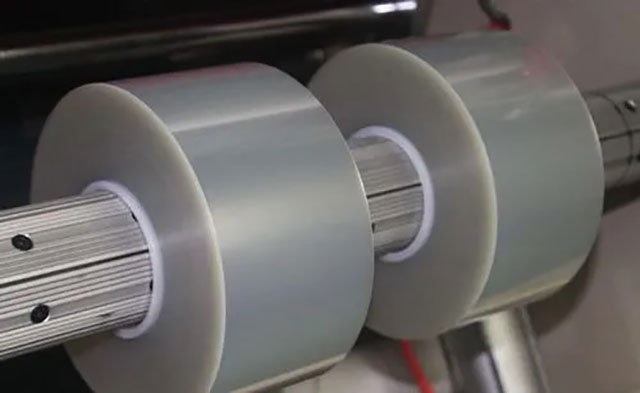
2. Automatic Deviation Guiding (EPC): Ensure the accuracy of the cutting edge
• Photoelectric/ultrasonic edge detection
Infrared array CCD or ultrasonic sensor (resolution ± 0.1mm) is used to monitor the edge position of the film in real time, and the sampling frequency is ≥ 1kHz to ensure the response speed at high speed.
• Actuators
◦ Pneumatic guidance: suitable for low speeds (< 50m/min), the response time is about 100ms
◦ Servo electric correction: high-speed scene (> 100m/min), linear motor + ball guide rail, response time ≤ 10ms, guiding accuracy ± 0.3mm
• Control algorithms
Fuzzy PID control combined with edge position prediction model can predict the deviation trend of the film (such as the gradual shift caused by material ductility) in advance and achieve advanced correction.
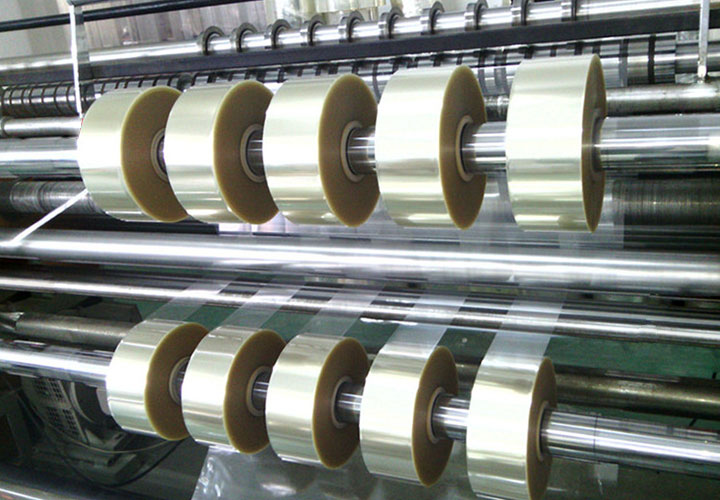
3. Collaborative control strategy
• Tension-guide coupling control
When the guiding system detects the film offset, it synchronously fine-tunes the tension roller pressure on the corresponding side (such as increasing the right tension when the left side is offset) to form a composite correction effect.
• Dynamic pitch adjustment
When slitting multi-specification products (such as 3μm/5μm film mixed slitting), the tension system and the round knife servo motor are linked to ensure the instantaneous tension stability when the tool pitch is switched.
4. Auxiliary quality assurance measures
• In-line defect detection
The integrated high-speed line-scan camera (e.g., 2048-pixel CCD) detects defects such as burrs and cracks on edges after slitting, triggering automatic rejection or alarms.
•environmental control
Constant temperature and humidity workshop (temperature 23±1°C, humidity 45±5%RH) to reduce the change of film expansion and contraction, and electrostatic eliminator (ionizing air bar) to avoid uneven tension caused by film adsorption.
• Tool management
The diamond-coated round knife (cutting edge angle 30°±0.5°) is equipped with an automatic sharpening system, which is resharpened online after every 100km cutting to maintain the sharpness of the cutting edge.
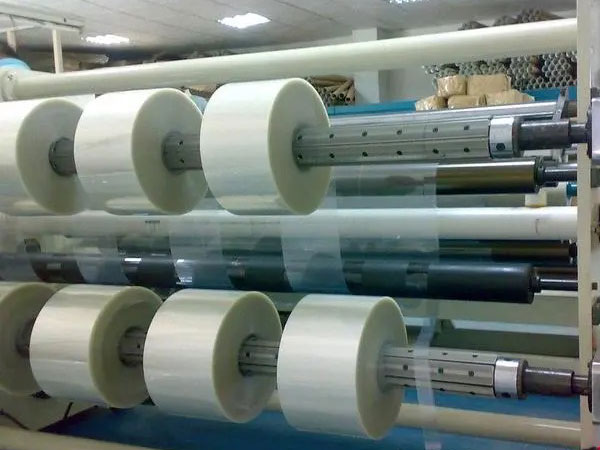
5. Practical application data
• High-end equipment indicators:
◦ Slitting speed: ≤350m/min
◦ Slitting width error: ±0.1mm (width< 500mm)
◦ Uniformity of coil end face: ≤±0.2mm
◦ Yield: ≥99.8% (without tension/guiding failure)
Through the fine cooperation of the above systems, the capacitor film slitting machine can meet the high-precision processing needs of ultra-thin film (2~10μm) in the fields of new energy and electronics, especially to meet the challenges of easily stretchable materials such as polypropylene (PP) and polyester (PET). In actual commissioning, the control parameters need to be individually optimized according to the material properties (e.g. Young's modulus, yield strength).
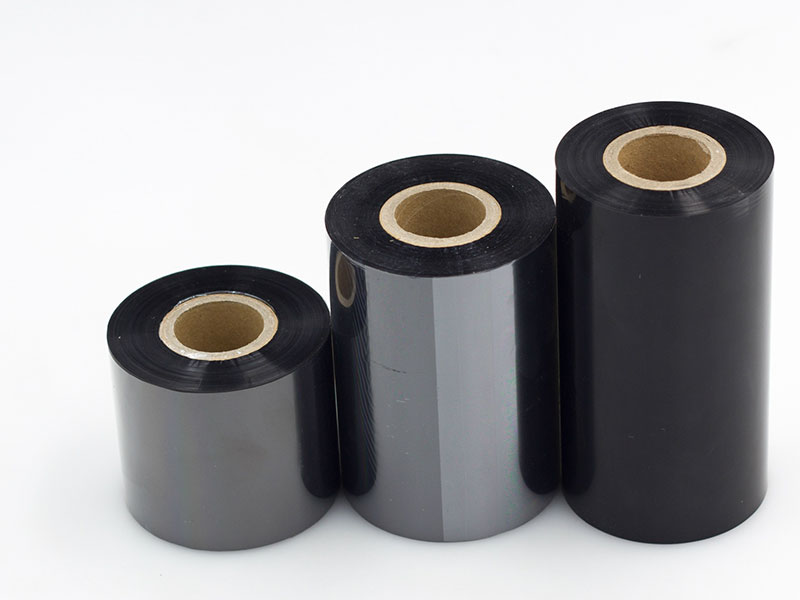
In the future, the tension control of the ribbon slitting machine will be more intelligent, adaptive and environmentally friendly.
05. December, 2025
the slitting machine is a key equipment for cutting large width and large coil diameter master coils into multiple rolls of narrow and small coil diameter finished products.
18. September, 2025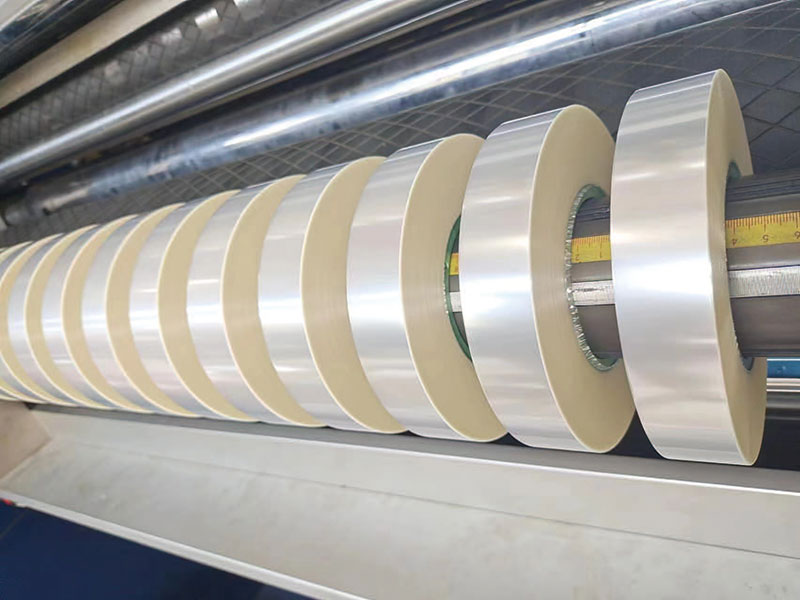
Adjusting tension according to film thickness is a dynamic process of "set-observe-fine-tune":
04. September, 2025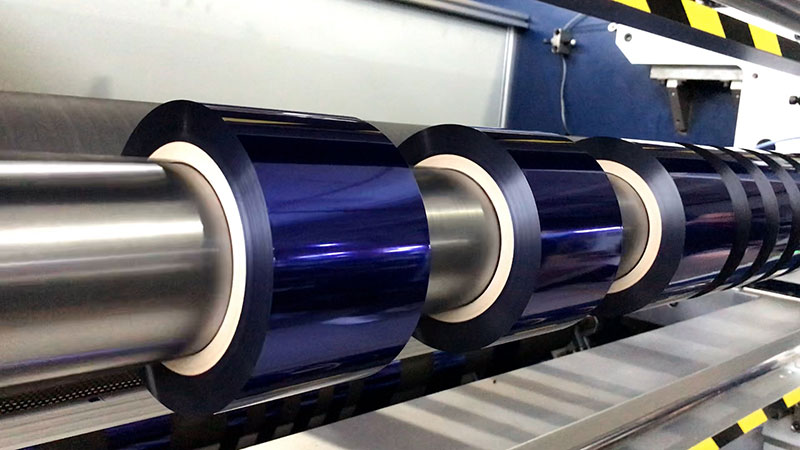
It lays a solid foundation for the subsequent hot stamping process.
26. August, 2025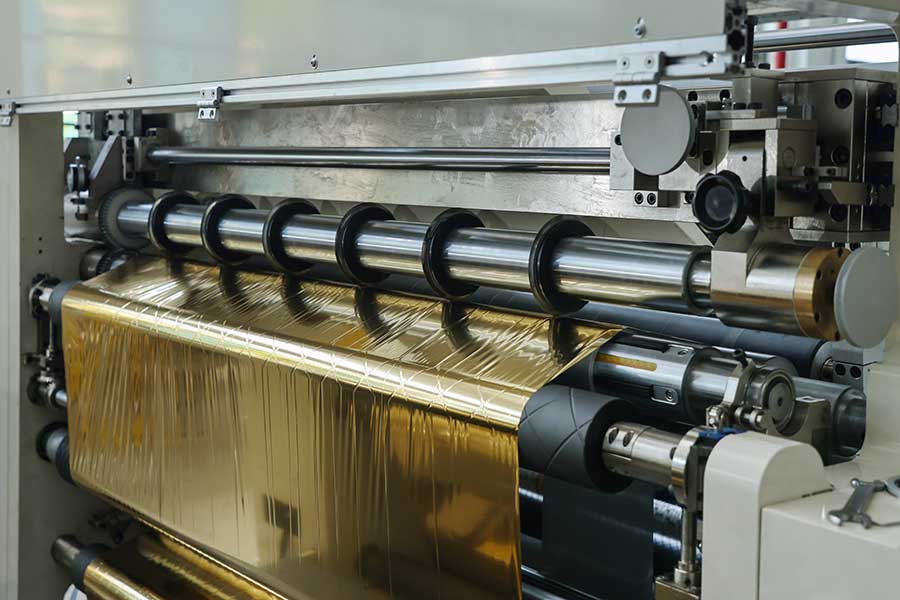
Extending blade life is a systematic project that involves multiple aspects such as parameter setting, daily maintenance, equipment status, and operating habits.
25. August, 2025